When we think of trekking we think of walking long miles, climbing hills and watching nature in all its splendor. For me, trekking is all that. But even more important is the time alone which enables me to look within myself, gather my thoughts, re-visit my dreams and discover myself.
Most recently I went on a trek in the foothills of the Kumaon Himalayas in Uttarakhand. I want to share that with you. I had just recovered from a series of three operations for hernia. Three because the first two failed, thanks to some incredibly incompetent surgery. However Indian culture being what it is I am none the richer for it. However, I was very keen to start walking again and to prove to myself that I had indeed recovered fully. As it happened I had an assignment with the SSB Academy, Gwaldam. The SSB – Sashastra Seema Bal is one of our border guarding forces that guards the Indo-Nepal border. I took that opportunity to go for a small trek after completing my assignment.
To get there, you take the train – Ranikhet Express – from Old Delhi station and get off early next morning at Katgodam. I was met by the SSB driver and gunner who had been detailed to receive me. The driver is an old friend from Manipur, all of 4 ½ feet tall, who gives the most brilliant salute accompanied by, “Jai Hind Shaaar!!”. It makes you feel 10 feet tall to be greeted like that. I did the best salute that I could manage and returned the greeting, “Jai Hind”, standing to attention. Mercifully I have had a lot of practice in these things and managed to do a reasonable job.
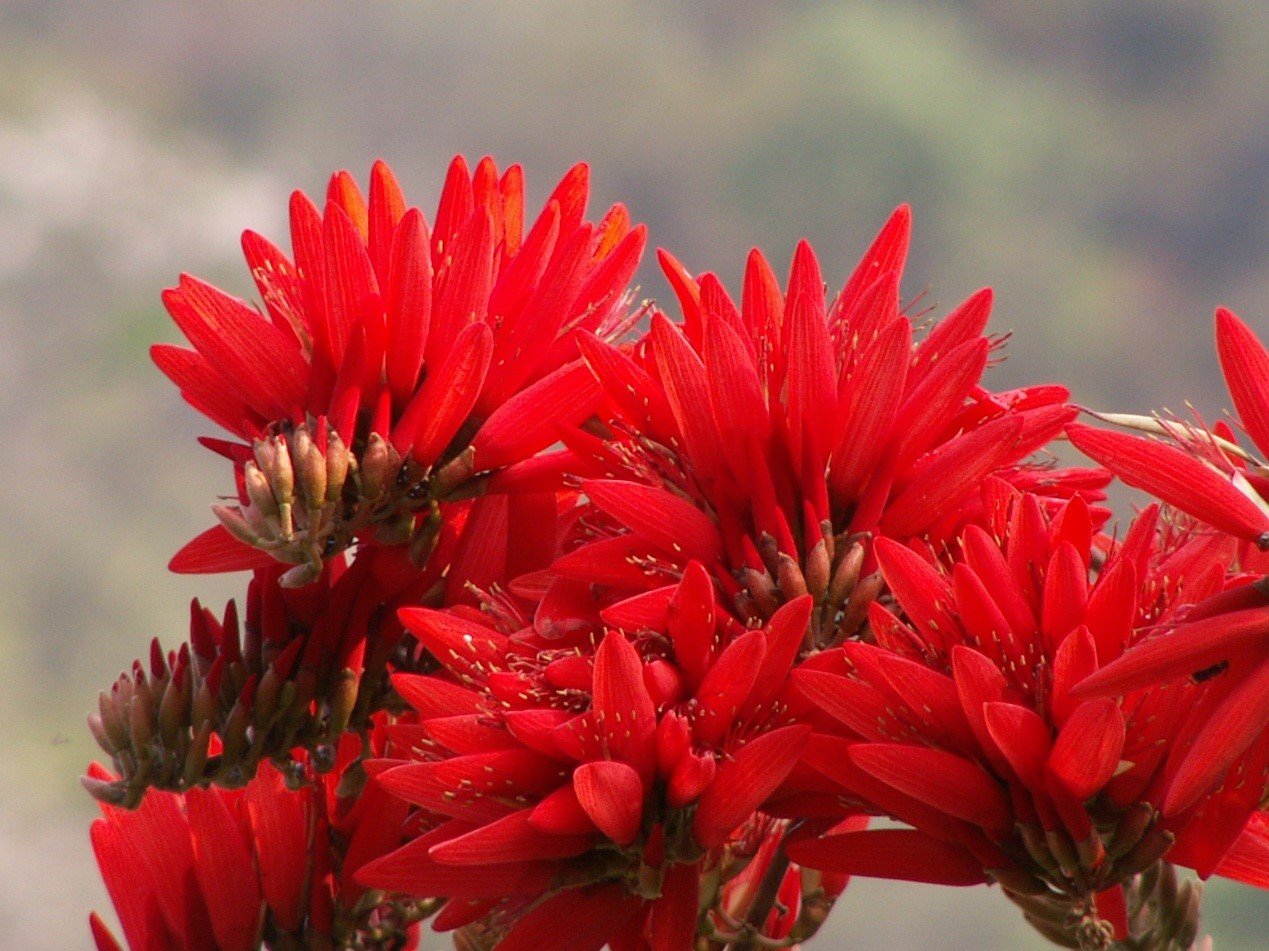
From Gwaldam we drove to Ranikhet. This takes about 3 ½ hours and can be done by bus or car. The road is very good and goes along a river for the most part. All along the riverside there are tall Thorny Dadap (Macaranga Indica) trees in bloom. The flower is blood red and the tree completely devoid of leaves. The flower has nectar in its center and attracts a lot of birds. Truly a beautiful sight.
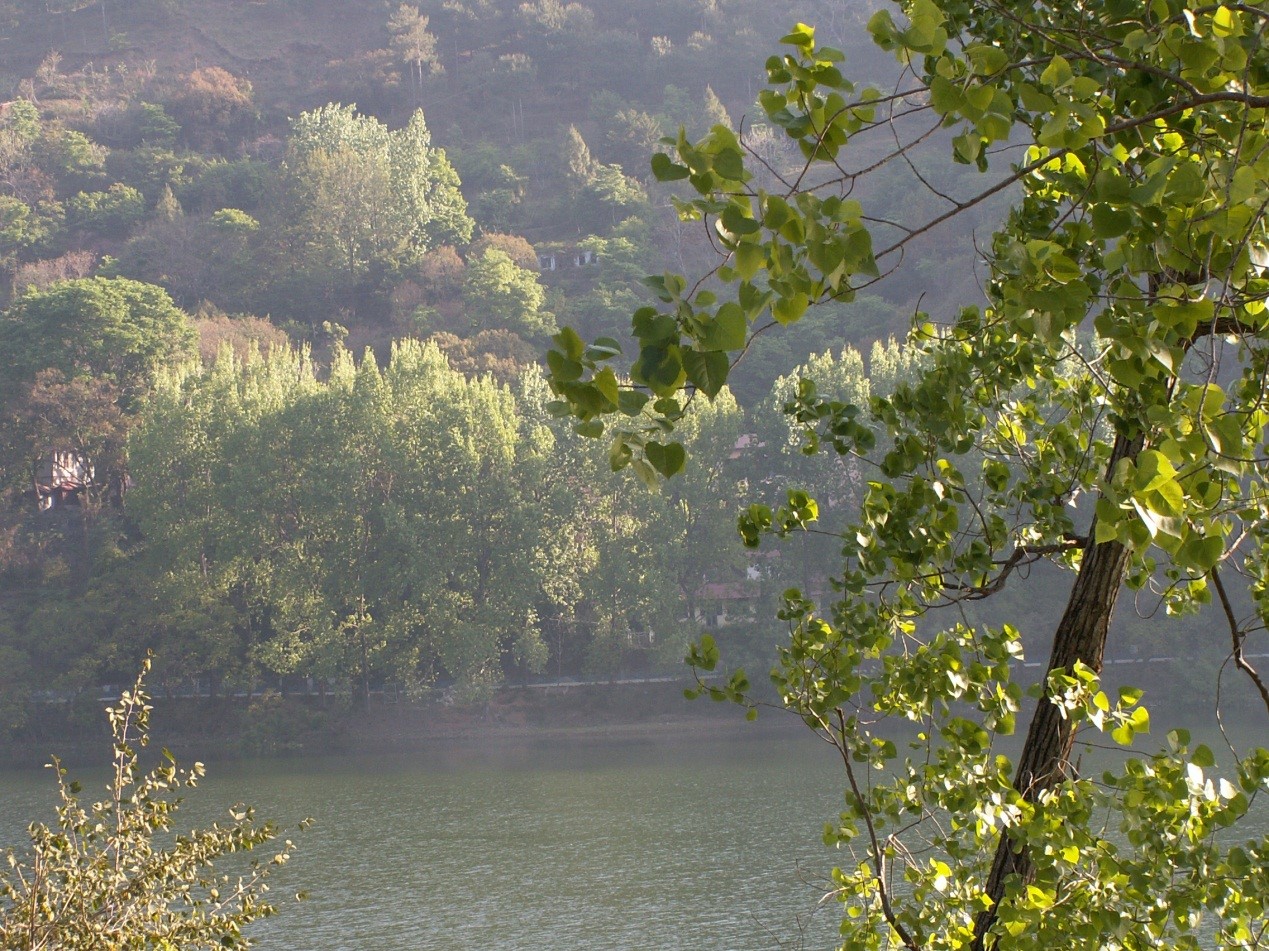 Almost midway we come to Bhimtaal which is a lovely lake bordered by lots of trees. The road runs along the edge of the lake and if you have the time you could stop at one of the tea shops for a break. If you leave Katgodam as soon as you arrive then by the time you reach Bhimtaal, the sun would be at an angle where the little wavelets turn to silver. What strikes me the most, every time I have done this drive, is the silence. Coming from the noise of big cities, this is a most welcome change. That and the clean pure air.
Almost midway we come to Bhimtaal which is a lovely lake bordered by lots of trees. The road runs along the edge of the lake and if you have the time you could stop at one of the tea shops for a break. If you leave Katgodam as soon as you arrive then by the time you reach Bhimtaal, the sun would be at an angle where the little wavelets turn to silver. What strikes me the most, every time I have done this drive, is the silence. Coming from the noise of big cities, this is a most welcome change. That and the clean pure air.
Having had your tea, you start again up the road and about 2 hours later you enter the town of Ranikhet. This is a district headquarters and the seat of local government. It is also the Regimental HQ of the Kumaon Regiment. The Regimental Museum is well worth a visit and is open to the public. The Kumaon Regiment has an interesting history. The Kumaon Regiment was raised in Hyderabad on March 1st 1922 by Nawab Salabat Jah Bahadur who was a brother of the Nizam of Hyderabad. It was called the 19th Hyderabad Rifles. Later it was named The Kumaon Regiment and is headquartered in Ranikhet in Uttarakhand.
Some comments about this regiment which will interest Hyderabadi readers:
http://www.bharat-rakshak.com/LAND-FORCES/Army/Regiments/Kumaon.html
Comments: The Kumaonis had been in British military service since the early 19th Century. As part of the North Indian class, who had joined the military of the East India Company’s forces, the Kumaonis had moved to other states in search of military service. Thus they formed part of the Hyderabad Contingent, which was raised, trained and led by British officers under Henry Russel, but paid by the Nizam of Hyderabad. In 1857, in keeping with the class based composition of the infantry, the Regiment comprised Rajputs, Jats and Muslims. After the Great War, some Kumaoni battalions were raised separately, but the Hyderabadis continued and fought with distinction in the World War. In 1945, the Hyderabadis became the Kumaon Regiment. When the Naga Regiment and the Kumaon Scouts were raised, they came under the aegis of the Kumaon Regiment.
Ranikhet is an Army town and large parts of it are Cantonment and belong to the Army. Consequently it has not gone the route of most Indian towns and cities and still has open areas, parks, a golf course and old bungalows. Some of these are now being taken over by the new Uttarakhand State Government and being converted into hotels presumably one step before being knocked down to build apartment blocks in our standard architectural style called Modern Indian Horrible. But if you go quickly you will still see this beautiful town before it goes the way of others.
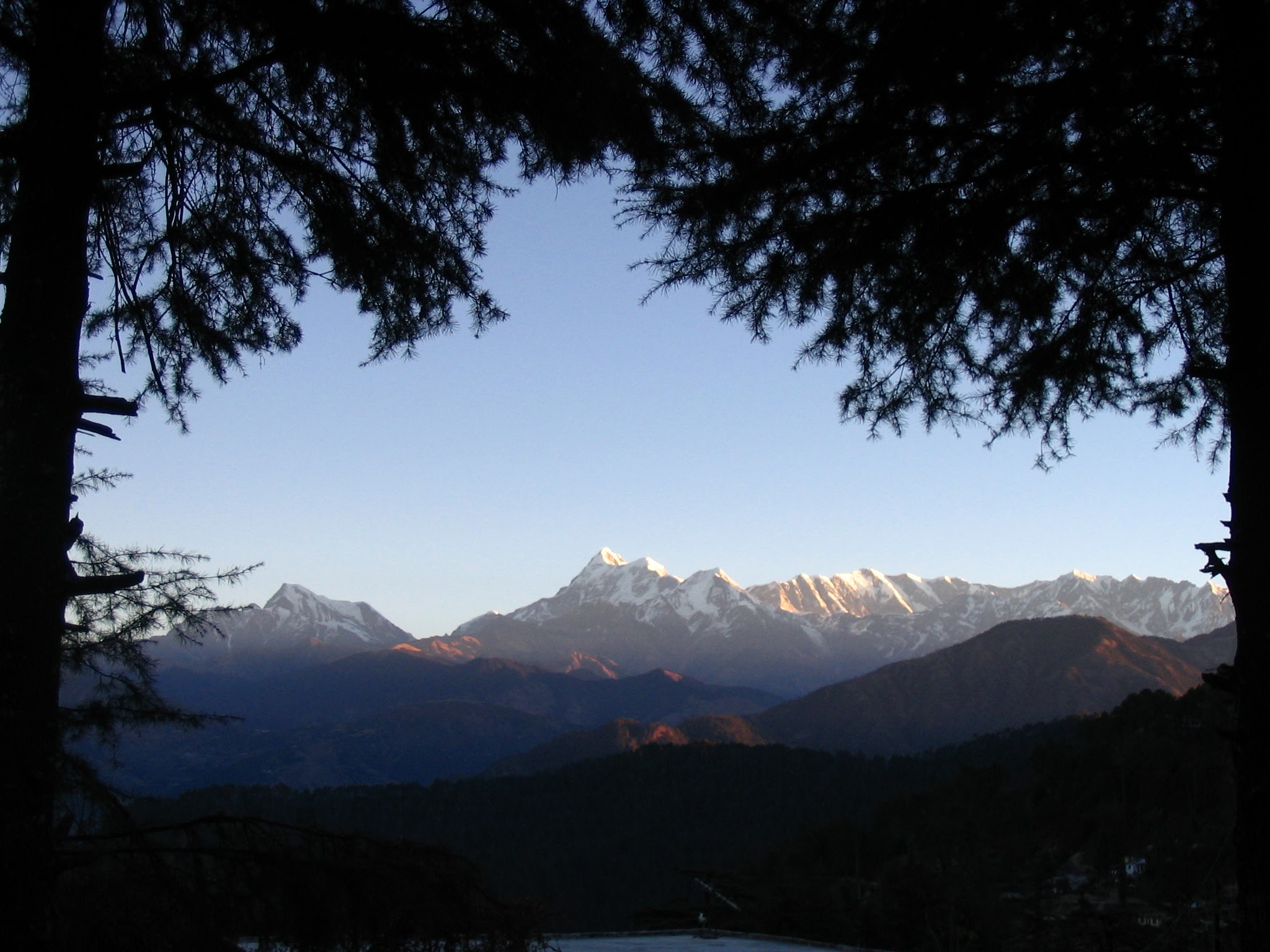
Having had a good breakfast in Ranikhet you proceed further up the road and about an hour or so later you come to Kasauli. This is the first clear sight of the Himalayan snow peaks that you should be able to see. You can see the peaks from Ranikhet as well on a clear day but the Kasauli sighting is much better. Certainly, a good bit of luck is needed in this matter as the Himalayas are both shy and hospitable. Shy to show themselves and hospitable to any passing cloud that wants a shoulder to cry on. So, for a great deal of the time they are hidden by cloud masses. It is only when it gets cold that the clouds do what clouds do and you can see the snow peaks. Kasauli also has a tea shop that belongs to the Uttarakhand Tea Corporation which serves some excellent high grown teas. You can also buy some to take back, but let me warn you that the price is not cheap. Having had our fill of the Himalayan views and tea we then proceeded further up the road to our final destination, Gwaldam.
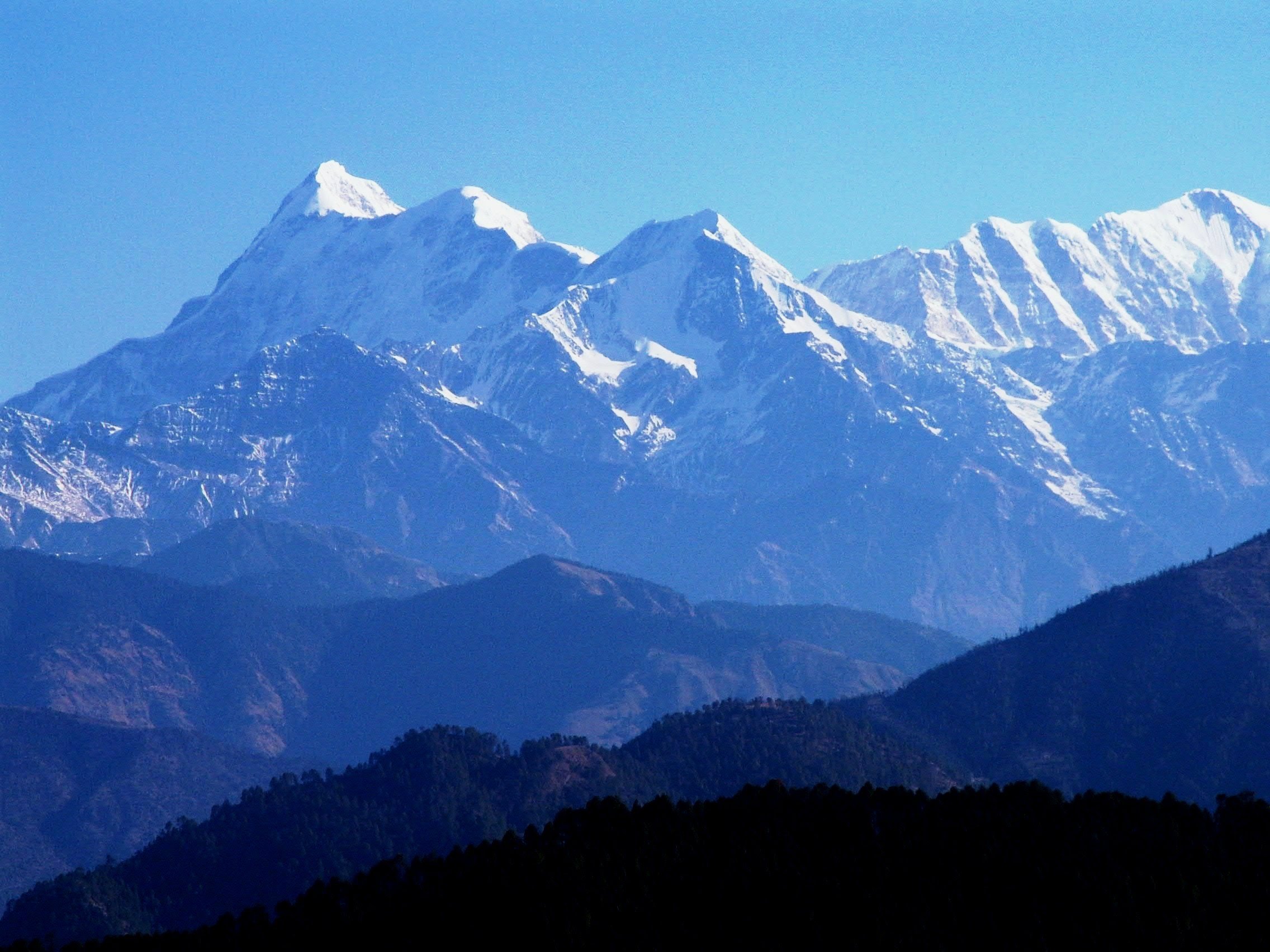
Gwaldam is at an elevation of about 7000 feet above MSL (mean sea level) and can be very cold. Especially when it rains. The Himalayan peaks that you can see from there are Trishul and Nanda Ghutti (not to be confused with Nanda Devi though it is the same range). And they seem to be in your front yard. If you were a crow and flew towards them, they are not more than 9 – 10 km from the Deodar tree in Gwaldam from which you would take flight. But since you are not a crow you will have to be content with taking photographs. Gwaldam has lots of Deodars and Pines. The sound of the wind in them is like the sound of the waves of the ocean. Interspersed among them are the signature plants of this elevation, Rhododendrons (Buraans as the Kumaonis call them). These are short trees, maybe 10-12 feet tall and when in bloom, entirely covered with flowers.
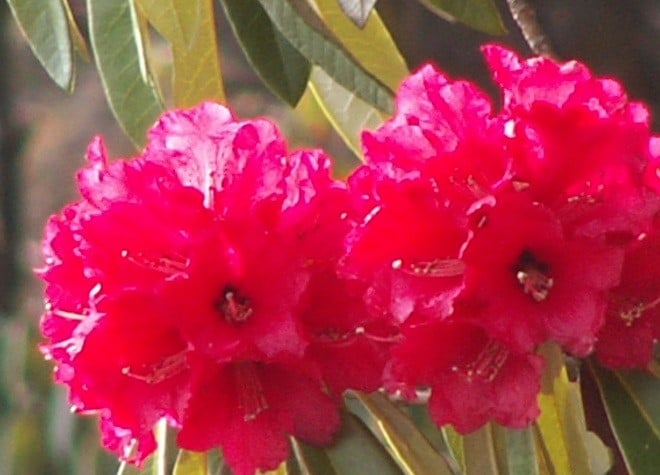 The flower looks like a large rose and has fleshy petals that are edible. They make a juice from them which they claim is beneficial for people with hypertension. I have seen Rhododendrons in four colors, rose pink, blood red, powder pink and white. It is an amazing sight in March – April to see entire forests of these trees, as if splashed with multi-colored paint. A total abundance of color. You can’t be blamed if you wake up one morning and look out of your tent and start to imagine that you had died the previous night and have now woken up in heaven. Misty valleys, grassy meadows mowed smooth by herds of sheep, forests of Rhododendrons, sunlit glades in which you can see Muntjac and Monal Pheasent.
The flower looks like a large rose and has fleshy petals that are edible. They make a juice from them which they claim is beneficial for people with hypertension. I have seen Rhododendrons in four colors, rose pink, blood red, powder pink and white. It is an amazing sight in March – April to see entire forests of these trees, as if splashed with multi-colored paint. A total abundance of color. You can’t be blamed if you wake up one morning and look out of your tent and start to imagine that you had died the previous night and have now woken up in heaven. Misty valleys, grassy meadows mowed smooth by herds of sheep, forests of Rhododendrons, sunlit glades in which you can see Muntjac and Monal Pheasent.
Amazing bird, the Monal. The colors of the Monal can’t be described. The closest I can come is to say that it appears that there is an electric light inside the bird because it seems to glow from within. The colors are fluorescent and kaleidoscopic. It shimmers in the early morning light and watches you warily over the shoulder as it moves away. And then with its typical whistle it flies heavily off. I always thought the Peacock as the ultimate in beauty until I saw the Monal. A pity that thanks to indiscriminate hunting their numbers are sadly reduced.
In March you will also see some compacted, snow in the shadows where the light of the sun does not reach it. Little streams flow from unexpected places and meander through the meadows and make little waterfalls off the rocks here and there. The water is ice cold and good to drink. Not too many places left in this country where you can drink the water straight from a stream and live to tell the tale. But I am living proof that provided the stream was in the hills of Uttarakhand you will be none the worse for your drink.
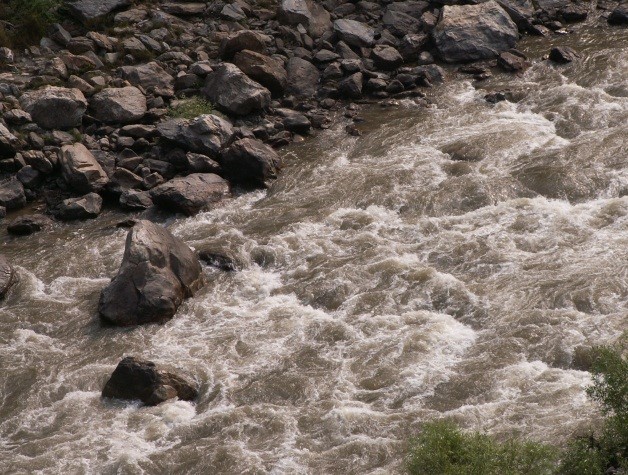 From Gwaldam we took the road to Karanprayag. The road winds along the Pinder river which is on your right at the bottom of the ravine. The Pinder is ice cold and fast flowing, sometimes loaded with mud if there has been any rain in the upper reaches. It has very inviting sand banks on most bends but it is dangerous to camp on them on account of the danger of flash floods. The Pinder also has some excellent trout fishing. And if you are among those who either don’t or can’t fish, you can buy the trout from the several little road-side shops if you reach them early enough in the morning. The shops also sell rice and curry. The curry will take the top of your head off to let out the steam, if you, the unwary fall upon it with open mouth. The anti-dote is not water but plain rice or curds (yogurt) which the shop will also sell you.
From Gwaldam we took the road to Karanprayag. The road winds along the Pinder river which is on your right at the bottom of the ravine. The Pinder is ice cold and fast flowing, sometimes loaded with mud if there has been any rain in the upper reaches. It has very inviting sand banks on most bends but it is dangerous to camp on them on account of the danger of flash floods. The Pinder also has some excellent trout fishing. And if you are among those who either don’t or can’t fish, you can buy the trout from the several little road-side shops if you reach them early enough in the morning. The shops also sell rice and curry. The curry will take the top of your head off to let out the steam, if you, the unwary fall upon it with open mouth. The anti-dote is not water but plain rice or curds (yogurt) which the shop will also sell you.
Having got some 2 kilos of freshly caught trout, we proceeded on our way to Karanprayag. This is where the Pinder meets the Alaknanda. Together the two flow as one until they come to Rudraprayag where they are joined by the Mandakini. The three then flow along together until Devprayag where they meet the Gangotri which comes from Gangotri glacier and together they flow down to the Bay of Bengal. Only, now the river is called the Ganga. From Karanprayag we drove along the road climbing and winding along the Alaknanda until we came to the village called Sari.
These roads with the mountain on one side and a sheer drop on the other are maintained by the Border Roads Organization, a wing of the Indian Army and known for their expertise in maintaining mountain roads. They do such an excellent job that they are justly famous all over this region. Were it not for them, the 6-hour journey from Gwaldam to Sari would have been many hours longer.
Sari is the end of the road. At Sari you leave your transport and first sit in one of the tea shops to drink some tea. You would have noticed that tea and sitting in the tea shop are important rituals of this trail. Indeed, they are. For they have less to do with the business of drinking tea than with meeting local people, getting news and negotiating for porters and mules. All done in mountain time. So, don’t allow your city urgency to get the better of you. Drink the tea, watch the view and let the villagers make the beginning.
“Would you like to go up to Devariya Taal?” one will ask.
Resist the urge to reply, “No. I have come to live with you in Sari for the rest of my life.” And say, “Yes. Is it possible?”
“Yes of course it is.” And then the negotiation for rates of porters and mules begins. You can carry your own packs of course, but since we hadn’t had time to acclimatize we decided to play it safe and carry only ourselves and leave the rest to the mules. Now, don’t get me wrong. The idea of negotiation is to keep up the tradition and so that everyone has fun all around. The hill people don’t cheat you. What they ask is nothing more than what they deserve. And seeing that for you this is entertainment while for them it is a living, I would never dream of giving them a pie less than what they ask for and then give them a big tip. Yet we have to negotiate. For negotiation is a tradition that must not be treated lightly.
So little Prakash says, when asked for the rate for his mule, “Aat saw rupya sahib (800 rupees Sir).” And I say, “Yaar tere khachchar ka kiraya poocha. Usko khareedna nahin hai. (My friend, I asked to hire your mule, not to buy it.).” And we all have a good laugh and the negotiation is on its way. Eventually we agree to a rate that is a few rupees less so that his face is saved by showing how magnanimous he was to reduce his price but not too much. And my face is saved to show how magnanimous I am that I gave him almost what he asked for. And of course, you would never just give the asked for price. That way you would show what a fool you were and nobody would have any fun negotiating. When we returned the next day, Prakash got a thousand rupees from me, being his original price and my tip. But that is also understood and expected.
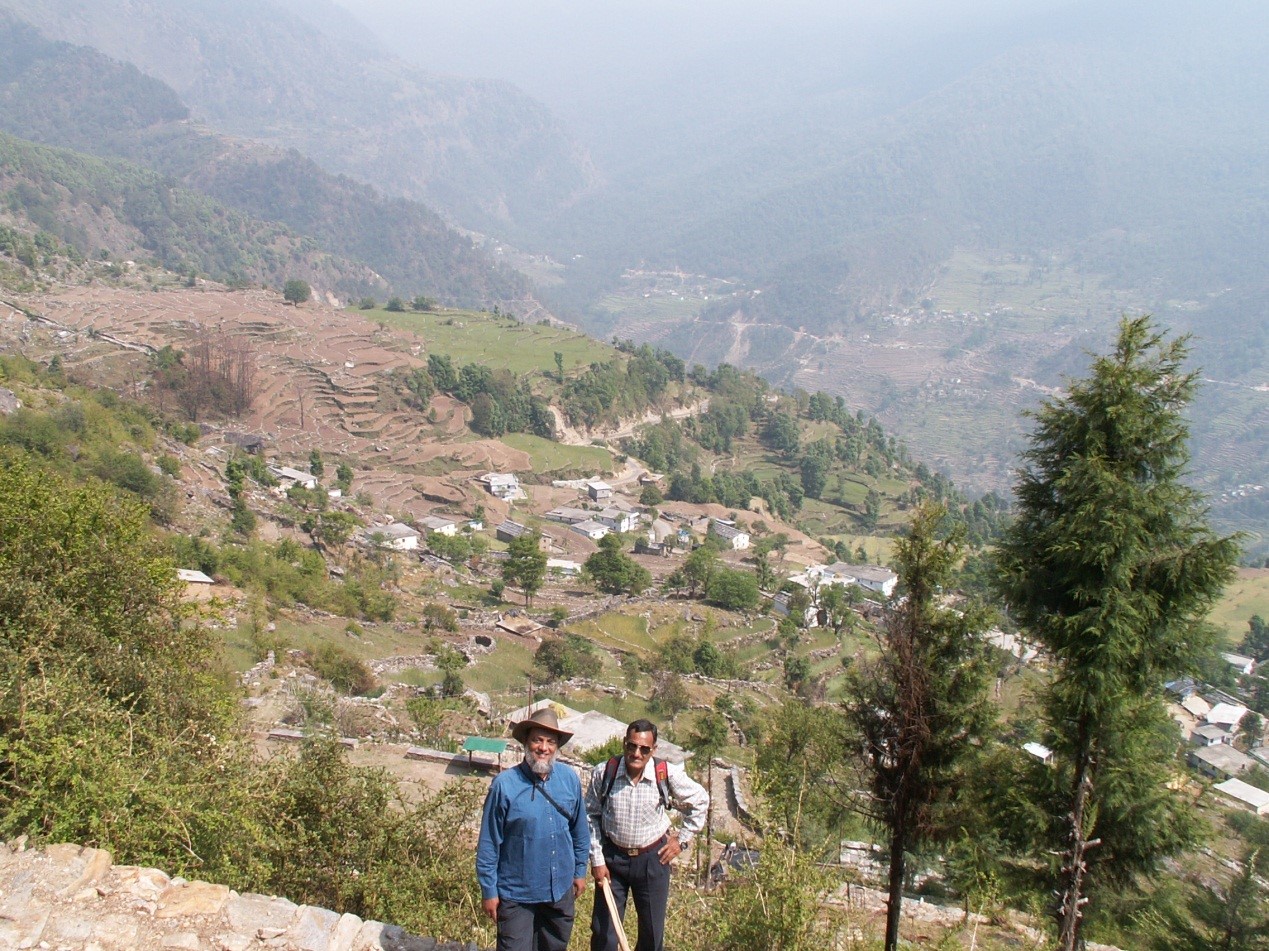 Once you have finished negotiating, then you simply leave all your bags with the mule keeper and start the climb. The hill people ate scrupulously honest and you need have no fear of losing anything from your pack. So, you start off.
Once you have finished negotiating, then you simply leave all your bags with the mule keeper and start the climb. The hill people ate scrupulously honest and you need have no fear of losing anything from your pack. So, you start off.
Much to your disgust, as you are about midway up the hill, panting for breath and asking yourself why on earth you had been so foolish as to imagine that you could do this trek, along would come Prakash and his mules, almost running up the steep climb and pass by you with a smile on their collective faces. No, you can’t kill Prakash. It is illegal. But then, as you take the next turn in the path, there he is, standing by with a brass lota (urn) filled with ice cold stream water, offering it to you, “Paani piyenge sahib?” What lovely people!!
From Sari village to the top of the hill is 2000 feet straight up. If it was any steeper it would be a wall and not a hill. The path winds along like a demented snake and so you end up walking a little over 2 kilometers. The Forest Department in its kindness has paved the path with stones. This makes it uneven and a very hard surface underfoot. And so it is now harder to climb than it would have been on the soft soil forest pathway that it has replaced. But that is entirely in keeping with all government projects. Tell me one, which actually makes life easier. On you climb.
Every time you believe you are dying, just stop and look back. Stone shingle roofs of the village houses, terraced fields growing wheat. You always thought that green was one color. Look at the terraces below you and you will realize that green is a thousand colors. You always thought that the wind was invisible. Look at the crop growing in the terraces and you will see the wind as it brushes the ears of wheat and bends them symmetrically in its passing. Think you are fit until you see an elderly grandmother with her goats, going up an almost vertical mountainside without a care in the world. Gives you a whole new perspective on life.
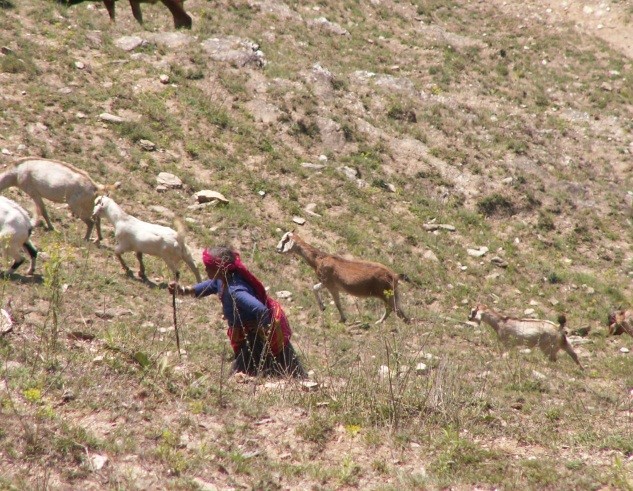
Reflect that every terrace has been built by hand, each stone bordering it, collected individually and placed skillfully so that it remains in place through the heavy monsoon and snowfall. Reflect that the soil in the terrace field has been carried there and added to every year. Each field represents the work of many generations, handed down from one to the other. Think about the hydraulic engineers who have managed to direct the flow of a small stream so cleverly that it irrigates many terraces and not a single drop of water is allowed to go waste. And then remind yourself that none of these engineers ever went to school. They learnt engineering in the school of life where the prize is survival and failure is starvation.
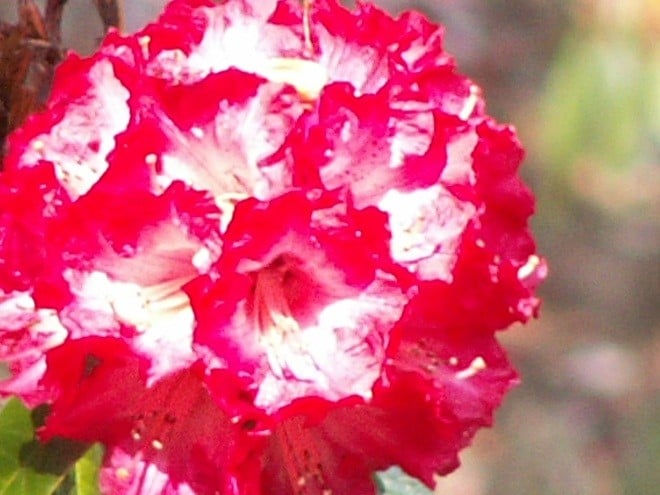 As you look and think and breathe the clean, cold air, your tiredness falls away and you get invigorated with new energy and once again you turn around and begin climbing. Now as you climb, look about yourself. Try to count the thousands of Rhododendron blooms. My friend Mr. G. C. Sah, Head of Outdoor Education at the SSB Academy, Gwaldam who was with us, calls them, ‘Ro Dho climb on’ – Cry, wash your tears, but climb on. Truly beauty can wash away exhaustion. As you climb, do pick a few petals of the Rhododendron flower and chew on them. They have a slightly sour tangy taste and are very pleasant to eat. Since you are not in any hurry and walk at a normal pace that is not too taxing you can do the whole climb in about 2 hours.
As you look and think and breathe the clean, cold air, your tiredness falls away and you get invigorated with new energy and once again you turn around and begin climbing. Now as you climb, look about yourself. Try to count the thousands of Rhododendron blooms. My friend Mr. G. C. Sah, Head of Outdoor Education at the SSB Academy, Gwaldam who was with us, calls them, ‘Ro Dho climb on’ – Cry, wash your tears, but climb on. Truly beauty can wash away exhaustion. As you climb, do pick a few petals of the Rhododendron flower and chew on them. They have a slightly sour tangy taste and are very pleasant to eat. Since you are not in any hurry and walk at a normal pace that is not too taxing you can do the whole climb in about 2 hours.
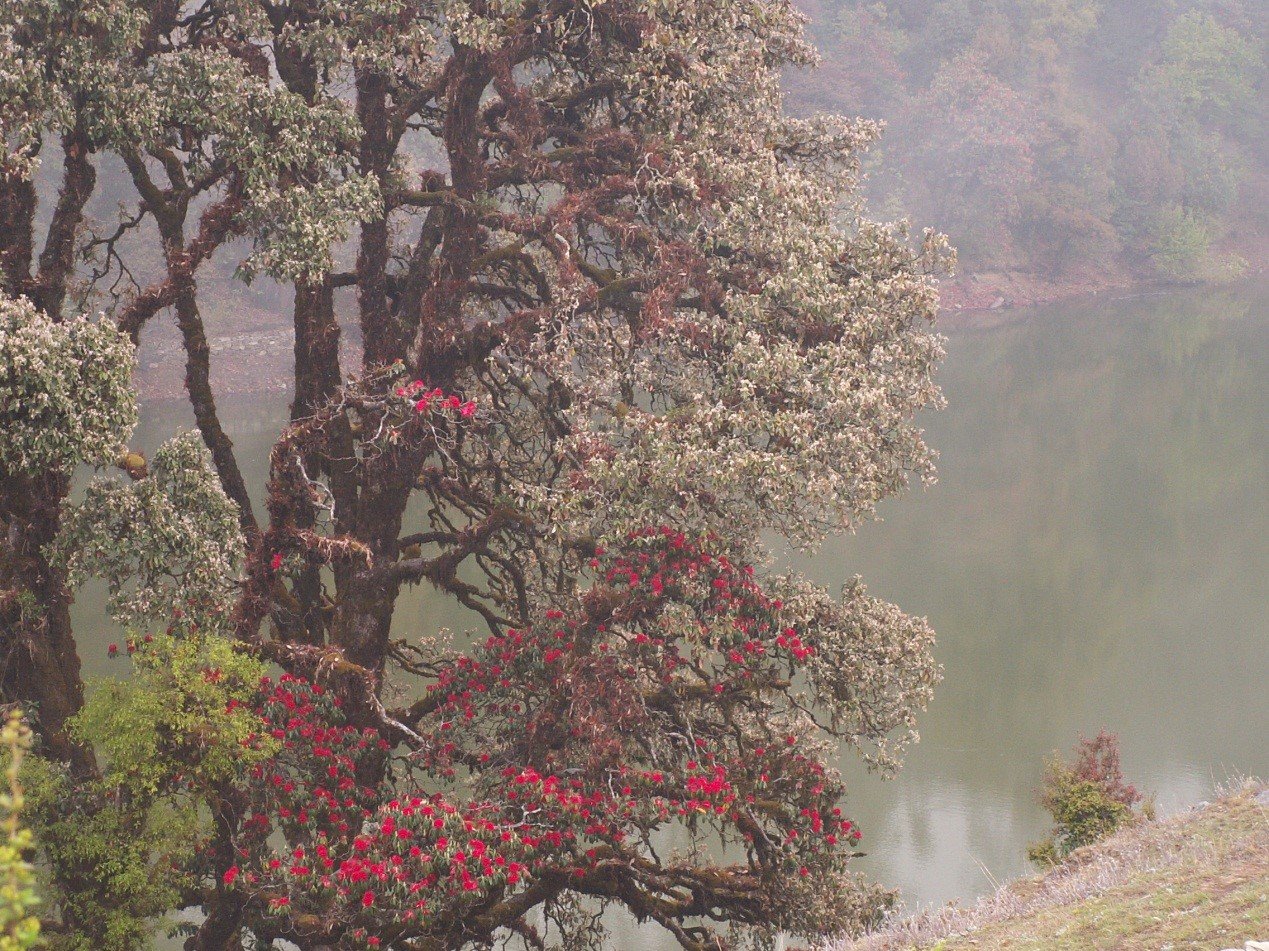
When you reach the final lip be prepared to have your breath taken away. For as you climb over the top, you suddenly see Devariya Taal spread before you. Set like a jewel in the middle of what you may take to be a golf course. So closely has the grass been cropped by the sheep which graze there. The lake is green with algae as the water is still and has no flow. It is really a collection of rainwater and snow-melt and perhaps has a spring or two at the bottom. So in the summer when the sun is bright, algae has a field day and the whole lake becomes a dark green in color. Devariya Taal has a lot of fish, mainly carp, as far as I could make out. Some fairly large.
Fishing is permitted from the bank and there is no boat, so you can only catch some very small fry which are really not worth catching. So after catching two, to prove that we could catch them, we threw them back in the water. You can pitch your camp on the high bank at the back of Devariya Taal from where you get a good view of the Himalayan peak called ChowKhamba. On a clear day when the sun is just right, Chowkhamba gets reflected in the waters of Devariya Taal, truly a magnificent sight.
When we reached the top, our support staff has already pitched camp and had a hot cup of tea ready for us. Most welcome indeed and heavily laced with sugar, gave us a much-needed energy boost. The sun was already starting its journey to the bottom of the mountain. In the mountain the light goes very rapidly, so it is a good idea to ensure that all you need to do is done before it gets dark. Wandering around on steep mountainsides in the dark is a good way to meet a quick end. Since we did not need to actually do anything ourselves, we just sat and watched the sun go down.
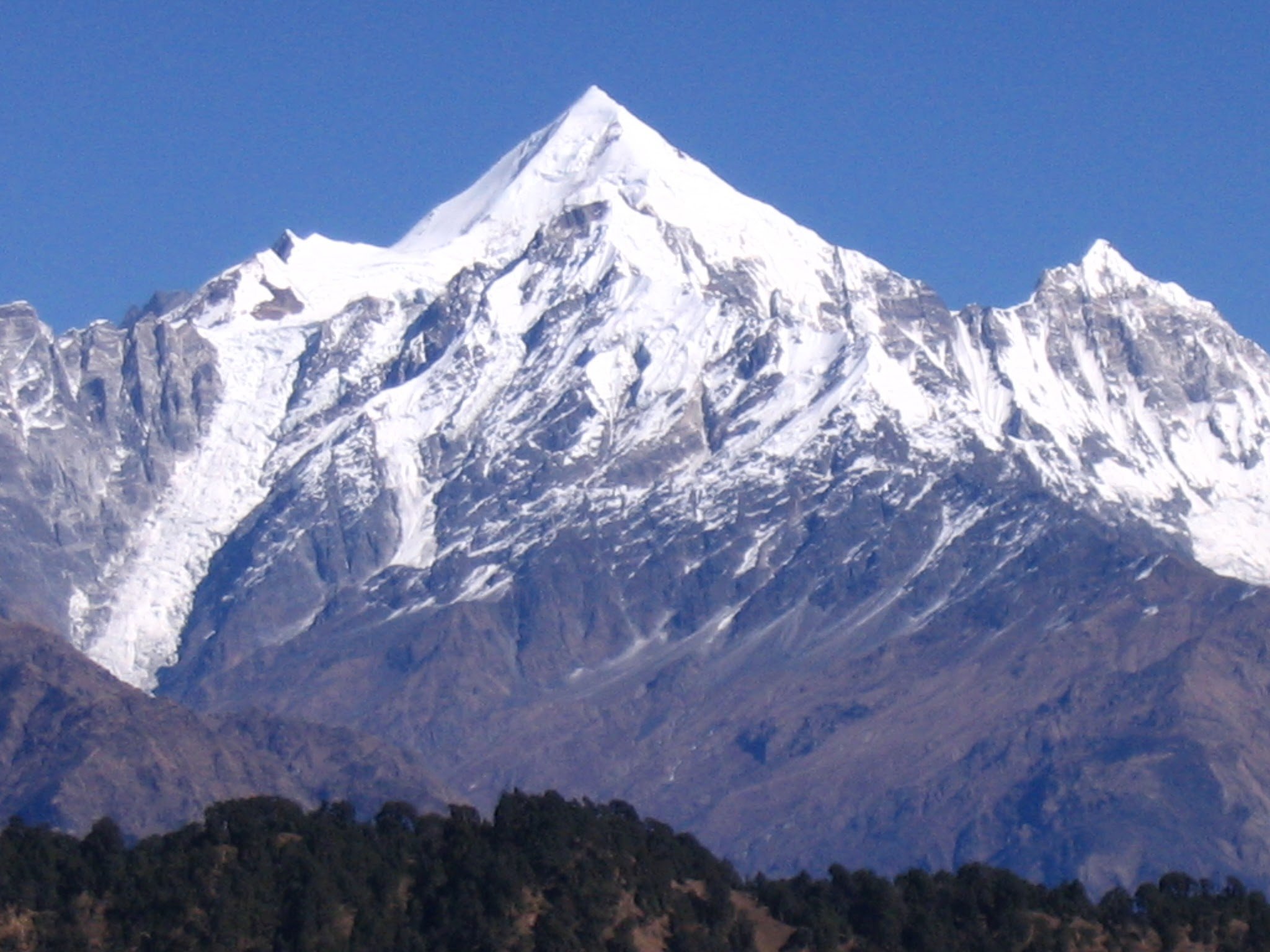 Watching the mountain as the sun sets is an experience in itself. The snow changes color with the light. First it is white as it reflects rays that are stronger and more direct. It shines and shimmers and you have to shut your eyes in tribute to its brilliance. Then as the angle of the sun changes and it starts going down the snow changes color to pink, to orange to the beginning of a grey that eventually turns dark. All in a matter of minutes. But interestingly it never completely turns dark. There is always some ambient light from the stars or moon that keeps the snow lighted just a little. Such are the delights of the mountains.
Watching the mountain as the sun sets is an experience in itself. The snow changes color with the light. First it is white as it reflects rays that are stronger and more direct. It shines and shimmers and you have to shut your eyes in tribute to its brilliance. Then as the angle of the sun changes and it starts going down the snow changes color to pink, to orange to the beginning of a grey that eventually turns dark. All in a matter of minutes. But interestingly it never completely turns dark. There is always some ambient light from the stars or moon that keeps the snow lighted just a little. Such are the delights of the mountains.
I can write a great deal more about the whole businesses of trekking but this will do for now. All that remains is to light the camp fire, tell stories while you cook your food. And then eat and sleep. Night comes early in the mountains, as does day. So, eat well and sleep well. For tomorrow is another day.